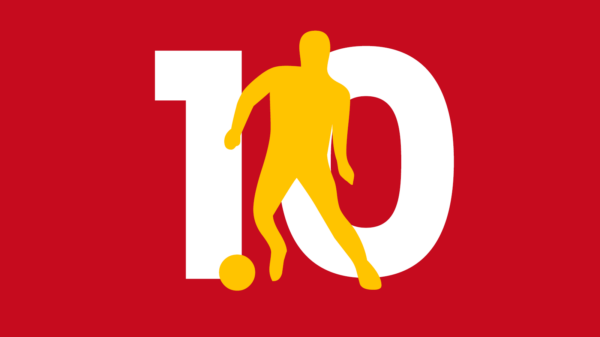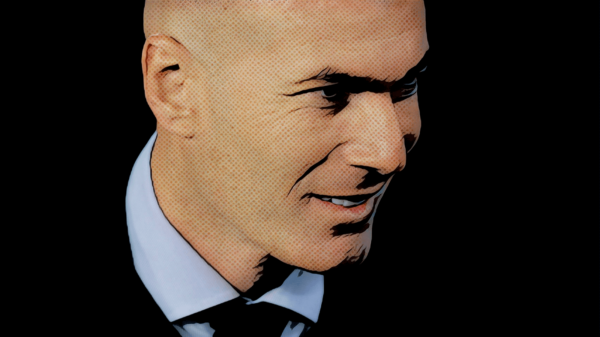
Being a football hipster is serious business with knowledge about the young starlet making waves for a non-mainstream mid table side often a prerequisite rather than a feather in the cap. To further enhance your, perhaps, burgeoning reputation as a true hipster, Outside of the Boot is on hand to provide an in-depth guide to some of the less celebrated teams around Europe. In this edition of the series, Tom Canton turns his gaze towards Celta Vigo.

THE PREVIOUS CAMPAIGN
For the newer fans of the Spanish League, Celta Vigo present themselves as one of the sides established in the top half of the table. Finishing 9th, 8th and 6th in 2014, 2015 and 2016 respectively, would certainly deceive many. However, you only have to go back to the summer of 2007 to find that Celta had just begun a 5-year long struggle in Spain’s second tier.
A regular in European competition during the late 90s and early 00s, Celta suffered an amazing turn of fate in 2004. After finishing 4th in 2002/03 and earning themselves a place in the Champions League qualification process, the following season saw them plummet and finish second bottom.
They managed to achieve immediate promotion back to the top-flight, however, Celta did not last long and were relegated, as I say, in 2007. Due to financial difficulties which nearly killed the club, they remained in the second tier until the season of 2011/12, when manager Paco Herrera managed to guide them to a 2nd place finish.
Their years in the Primera Division since have been exponentially more prosperous. After avoiding relegation on the final day of the 2012/13 season, Celta acquired the services of former Roma manager and now Barcelona boss Luis Enrique. Enrique dramatically improved Celta’s fortunes, and they finished in the top half of the table for the first time since 2006.
After Barcelona came calling for Enrique, Eduardo Berizzo was employed as Celta manager. Berizzo continued the work of Enrique, finishing 8th in his first season and managed to secure European football for the Vigo-based club in his second season, by finishing 6th. However, Celta’s history with the competition has taught their fans that their league form may suffer because of it, can Berizzo buck this trend?
MANAGER PROFILE
Eduardo Berizzo was a controversial figure during his playing career, after he left Marseille he made offensive remarks against homosexual footballers in France.
Fortunately for Berizzo, his management career has been as successful as his playing career was controversial. His recognition as a manager came during his time at Chilean club O’Higgins, where he guided them to the final of the Chilean domestic cup competition, only just losing on penalties to Club Universidad de Chile.
The following season Berizzo did lead O’Higgins to silverware, winning the Apertura, which was he the club’s first title in its 58-year history. In his final season in Chile, the club won the Supercopa de Chile (Chilean Charity Shield equivalent) before it was announced he would replace Luis Enrique at Celta Vigo.

Eduardo Berizzo impressed with his Celta side last campaign, and will look to continue to progress. MIGUEL RIOPA / AFP / Getty Images
Berizzo brought O’Higgins midfielder Pablo Hernandez with him to Celta for his first season, the familiarity allowed Berizzo to smoothly implement his high intensity style, often pressing the opponent up field and forcing mistakes as close to the opposition’s goal as possible.
Berizzo brought in a lot of youth players too, now 20-year-old, Belgian winger Theo Bongonda has gone on to make 22 appearances for Celta, an example of Berizzo’s commitment to nurturing young prospects.
It has been recently reported that Berizzo is being considered to take over as the new coach of the Argentinian national team, however, Celta will try their hardest to keep hold of the impressing manager.
TACTICAL APPROACH
Berizzo’s tactics have altered and adapted during his time in Vigo. The Argentinian first implemented a 4-3-3 system with one of the midfield three sitting in more of a holding role, often this position was filled by, now Atletico Madrid midfielder, Augusto Fernandez.
I spoke of Berizzo’s encouragement of youth development and his appointment was most beneficial to young Spanish winger Santi Mina. The youngster made his breakthrough into the squad the season before Berizzo arrived but the Argentinian coach furthered the youngster’s experience by regularly inserting him into a front three which included talisman Nolito and a striking partner alternating between Joaquin Larrivey and Brazilian striker Charles.
Berizzo identified that his side would heavily rely on the front three as their main source of goals and therefore kept them as fresh as possible, with the regular use of Fabian Orellana, Theo Bongonda and the aforementioned alternation between Charles and Larrivey at striker.
However, towards the end of the 2014/15 season, Berizzo experimented with a 4-2-3-1 system which saw Michael Krohn-Dehli drop into a deeper midfield role with Fernandez. The experiment proved fortuitous and Celta recorded 3 wins against Rayo Vallecano, Eibar and Espanyol, as well as holding Valencia to a 1-1 draw.
Berizzo took this successful trial into the following season. The system allowed the attacking midfield three in combination with the selected striker, to press the opposition at greater risk with the two deep-lying midfielders providing better defensive security. If I’m honest, I am staggered a manager who plays such a high intensity style didn’t do this sooner.
However, Berizzo decided not to implement his experiment immediately and persisted with his original 4-3-3 style for the first eleven games of the season. In fairness, Celta only lost two games during this period, however, as teams began to decrypt Celta’s style, Berizzo recognised the need to switch to his 4-2-3-1 system more regularly. From match day 26 to 37, Celta lined-up in their 4-2-3-1 formation and achieved an impressive record of 6 wins, 4 draws and just two losses. Ironically, for the final game of the season Celta reverted to their 4-3-3 structure and lost 2-0 away at Atletico.
After the loss of Larrivey, Charles and Santi Mina during the summer of 2015, much responsibility fell to Nolito and Orellana to bring the goals. Often deployed on opposite flanks, the pair racked up 19 goals and 14 assists between them during the 2015/16 campaign.
Nolito was often found creating space on the left hand side before taking a shot from distance, the Spanish international was excellent at varying his efforts, curling shots across the keeper or slamming them in at the keeper’s near post. Meanwhile, Orellana’s direct nature created several problems for multiple oppositions, the Chilean could be deployed on the right wing or through the middle and was key to Celta’s continuation as an established top-half side.
They were not alone in their scoring responsibilities however, Iago Aspas was signed from Sevilla at the start of the 2015/16 season for just under £4 million. The Spaniard managed an impressive 14 goals for Celta, starting 31 of his 35 appearances.

Having returned to Celta, Iago Aspas has revived his career and will hope to continue that form. MIGUEL RIOPA / AFP / Getty Images
After the sale of Augusto Fernandez to Atletico Madrid in January, Marcelo Diaz was brought in from Hamburg to cover the position, existing Serbian midfielder Nemanja Radoja could also deputise here and often did, with Daniel Wass commonly partnering either defensive midfielder.
TRANSFER MARKET ACTIVITY
The biggest piece of transfer news from Celta and one of the biggest of the entire league, was the departure of their talisman Nolito to Manchester City. The Spaniard earned Celta over £15 million, some has been spent on signing Midtjylland winger. The Ugandan born Dane is known for scoring from wide positions. Sisto played in both of Midtjylland’s opening two matches, scoring two goals; Berizzo will be hoping the winger can soften the blow of Nolito’s departure.
Celta have also signed striker Jose Naranjo from Gimnastic for £850,000. Typically, a signing of such a fee does not inspire fans to celebrate, however, Naranjo is an exciting young player. The 21-year-old scored 15 league goals for Gimnastic last season. I spoke to Football Radar’s Liga Adalente expert JuanMa Serrano and he spoke of the player’s excellent finishing ability, his impressive composure in 1-on-1 situations and his close controlled dribbling in tight areas, however, JuanMa did mention that he struggles in the air.
THREE KEY PLAYERS
Orellana: With the loss of Nolito to Manchester City, naturally much more emphasis will be on his former partner Orellana to provide the creativity and goals from the flank. Although Claudio Beauvue was brought in during the previous January window, the Frenchman has struggled for form, only finding the net on one occasion in La Liga. Therefore, Orellana, now being a much more seasoned and experienced player, will most likely become Celta’s talismanic figurehead, barring any further signings.
Gustavo Cabral: Gustavo Cabral had a storming season at centre-half for Celta during the previous campaign, the Argentinian has followed a long line of Argentines to play in Vigo, including current manager Berizzo. Celta’s defence has always been key to their pressing, high tempo style and they rely much on their back four and deep-lying midfielders to compensate when their attacking players leave them exposed during attacks. Cabral was one of the standout defenders of the previous season and Celta will need him more than ever during their Europa League campaign.
John Guidetti: Finally, although Iago Aspas was a regular scorer for Celta last year, for several seasons now much has been expected of the young Swedish striker John Guidetti. The former Manchester City forward, who spent time on loan at Stoke and Celtic, finally left the Etihad Stadium at the beginning of last season, scoring 7 league goals so far for the Spanish club.
Guidetti’s main problem lies with his breakout season back in 2010/11. Whilst on loan at Feyenoord, the then 18-year-old managed to score 20 goals in just 23 games, he has since never been able to live up to the hype which grew following this impressive start to his career. Now though, in a more stable situation in Vigo, Guidetti may be able to nail down a starting position and build his reputation back up again. The expectations will not relent though and bearing in mind the recent retirement of Swedish legend Zlatan Ibrahimovic, there is even more pressure on the young forward to take a step up to the next level, for himself and his country.
TALENT RADAR KEY YOUNG PLAYER
Jonny Castro: Jonny Castro has been at Celta his entire professional career. The 22-year-old is a versatile right-footed full-back who can play either right or left-back position; he has even deputised at centre-half on a number of occasions.
The youngster did play the majority of his games, totalling 25, on the left hand side for Celta last season. The Spaniard is quick, good on the ball and with an eye for a pass. Last season, he achieved 1 goal and 4 assists for the club.
The youngster’s energy and running aids Celta’s style, being able to recover into his position quickly is imperative to nullifying opponent’s counter attacks. His most impressive attribute though has to be his versatility, a full-back who can play either side and additionally deputise as a centre-back is an invaluable resource.

Despite having over 100 league games for Celta Vigo, Jonny Castro continues to impress, despite being only 22-year-old. JOSEP LAGO / AFP / Getty Images
CONCLUSION AND EXPECTATION
I am greatly looking forward to watching Celta Vigo this season, their history with combining league and European football does not bode well, however, Celta are a completely different animal now and have all the tools to cope with the fixture list.
I am intrigued to see the progression of players such as Guidetti and Castro, whilst also keeping an eye of how new signing Naranjo copes with his first season in Spain’s top-flight. As an admirer of young talents, it will intrigue me if what I have heard and read is true, or, if it is just another tale of a promising Spanish bull getting its horns stuck in the ground.
Written by Tom Canton
Read all our 2016-17 Hipster Guide articles here.
- 20 Key Young Players to Watch from 20 La Liga Teams - August 15, 2018
- La Liga’s 10 Young Breakthrough Players to Watch in 2017-18 - August 21, 2017
- Journey to the Top: The Rise of Marco Asensio - November 12, 2016



























































